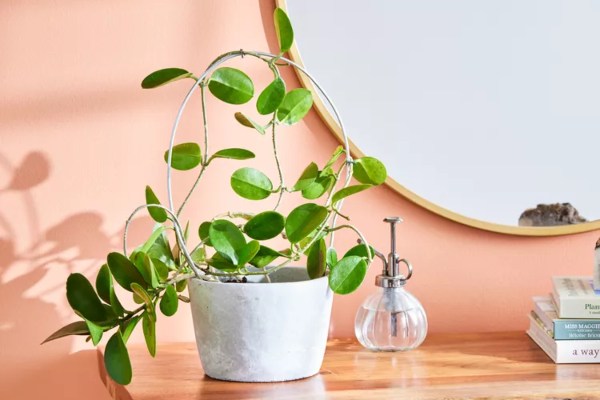Hoya australis plant is a kind of hoya plant with rounded, oval-shaped leaves, long climbing vines, and nice-smelling small white flowers. As the same refers, this native Australian vigorous hoya thrives best with lots of bright, indirect light, well-drained soil, and water only when it feels dry.
This species is rarer than the similar hoya carnosa but you can buy it from online sellers or specialty plant shops. Though many subspecies are harder to find in the US, some cultivars are available.
- Botanical Name: Hoya australis plant
- Common name: Waxvine, porcelain flower, honey plant, common waxflower
- Family: Apocynaceae
- Plant Type: Succulent, perennial
- Mature Size: 13-33 ft. long
- Sun Exposure: Partial
- Soil Type: Well-drained
- Soil pH: Acidic, Neutral
- Bloom Time: Spring, summer, fall
- Flower Color: White, magenta
- Hardiness Zones: 10-11 (USDA)
- Native Area: Australia
Also, Read The Best 15 Fruit Trees to Plant this Spring
How to care for Hoya Australis plant?
- Keep in a place with bright, indirect sunlight.
- Plant in loose, well-drained potting mix.
- Water when the soil has completely dried out.
- Fertilize monthly in spring and summer.
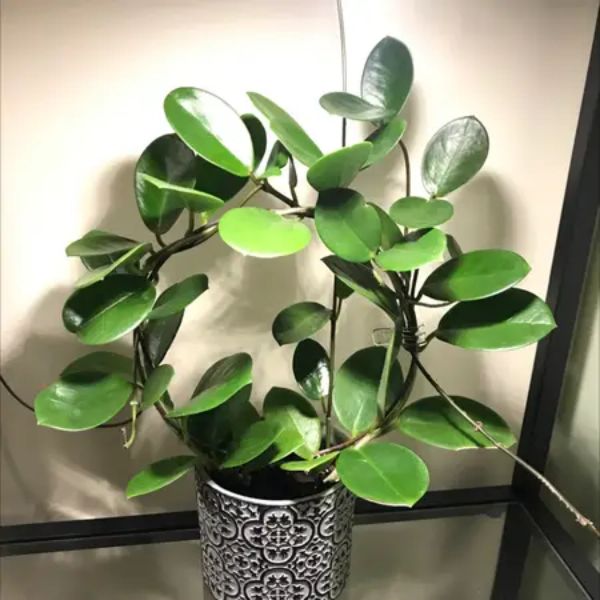
Light
Hoya australis thrives in filtered or bright, indirect light. Keep the plant out of direct sunlight because it can burn the leaves. Sufficient light, however, will bring a red tinge on new growth even before it matures.
Soil
Hoya australis thrives in a well-drained potting mix. You can get special mixes designed specifically for hoyas or make your mix by combining two parts potting mix with one part perlite and one part orchid bark.
Water
Just like the other hoyas, the waxy succulent leaves of hoya give this lovely plant the ability to tolerate dry conditions. However, sufficient water is required to support growth and blooms.
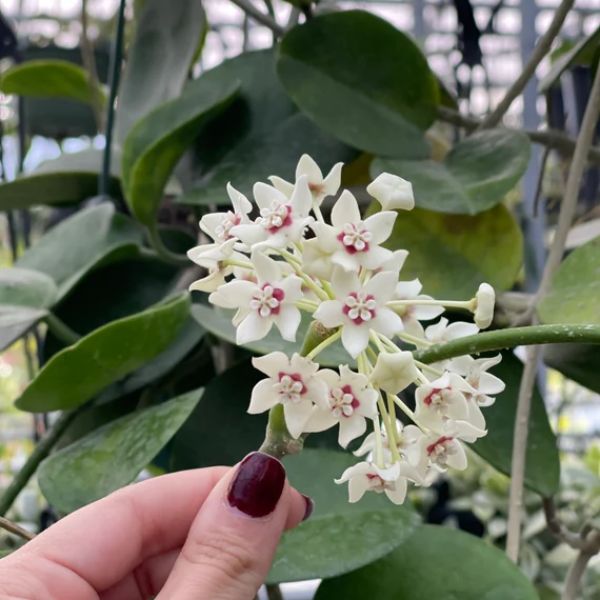
Watering the plant should be done when the plant is mostly dry but avoid letting leaves shrink or wilt between waterings. Keep in mind that the cultivars or subspecies with thicker leaves may require less frequent watering. Cut back on watering this plant in winter.
Temperature and Humidity
Hoya Australis can usually tolerate temperatures between 60°F and 95°F, though some subspecies can withstand temperatures over 95°F for longer periods without issue. This species grows best with humidity levels between 50 and 60 percent but can also tolerate drier conditions around 30 to 40 percent humidity.
Fertilizer
You can feed your hoya australis with a balanced liquid houseplant fertilizer diluted to half-strength during the growing season. It’s common to stop fertilizing houseplants in regions where winters are harsh. However, some hoya growers fertilize less frequently and at lower levels through the winter.
Orchid mist can help encourage mature plants to bloom. Be mindful of switching to a fertilizer with a higher proportion of phosphorus.
Types of Hoya Australis
- Hoya australis ‘Lisa‘: This variegated cultivar has small, oval-shaped green leaves splashed with cream.
- Hoya australis ssp. oramicola: This plant is known for smooth, glossy leaves with visible veins, vigorous growth, and loose, sweet-scented flowers.
- Hoya australis ssp. rupicola: This plant has narrow, pointed leaves, an upright growth habit, and large flower clusters.
- Hoya australis ssp. sanae: It is distinguished by white flowers with pink centers and thick, waxy succulent leaves that make it particularly tolerant of dry conditions.
- H. australis ssp. tenuipes: This plant grows wide, round green leaves with visible veins and prolific, fragrant blooms.
Do we need to prune Hoya Australis?
It is good to prune hoya australis if it becomes leggy and unmanageable. The best time to prune is after flowers have fallen away. Be mindful of leaving any peduncles, or flower stems, on the plant. You have to cut off long, leggy vines or those that have lost their peduncles.
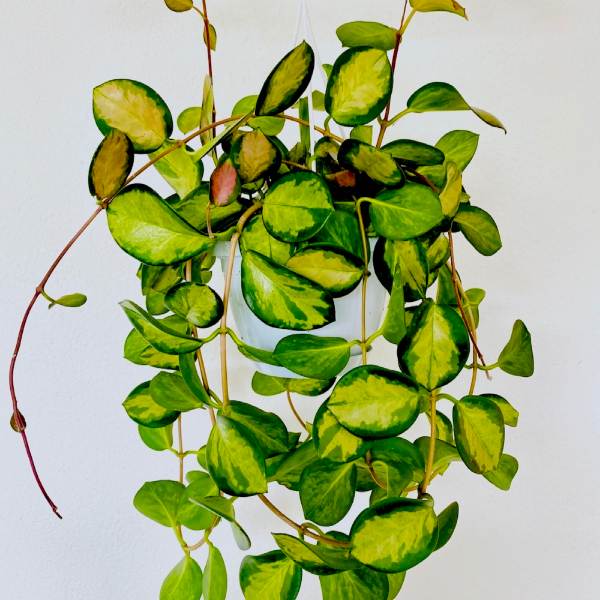
Also, cutting back dead and damaged growth is necessary as it encourages new growth. A trellis or other support for Hoya australis climbing vines might be necessary.
Propagating hoya australis
You can easily propagate this plant in soil or a soilless mixture using stem cuttings. The best chance to grow is in spring and summer when the plant is actively growing.
Before starting, take sterilized shears, small pots or containers, and any peduncles, or flower stems, on the plant. This is how we propagate this climber.
- Take a healthy stem from the mother plant with at least two leaves at the tip and two leaf nodes along the stem. Just below a node, cut it in a diagonal, and do not take cuttings from woody stems.
- Fill small plant pots with potting mix or perlite then sprinkle some water to moisten the soil and let it drain.
- Ensuring that the nodes on the lower end of the cutting are below the soil line, plant the cuttings in the growing medium.
- Since humidity is extremely important for the growing plant, place a clear plastic bag around each container to hold humidity. Make sure the cuttings are not touching the plastic.
- Keep the cuttings in a warm place with bright, indirect light. Condensation on the sides of the plastic bag is a sign that the cuttings are getting moisture. Spray them with water as needed.
- Within 3-4 weeks, roots should be developed and when they get about an inch long, you can repot the cuttings in soil and care for them as usual.
Common pests and plant diseases
Some houseplant pets like aphids, thrips, and mealybugs can infest hoya australis plants, sucking the sap from their succulent leaves. If you notice gray spots on leaves, that could be a sign of botrytis blight, a fungal infection.
How to get your hoya australis to bloom?
Once they fully open, you can expect their flowers to be present for almost a week before they start fading.
What does Hoya australis look and smell like
If you have one at home, you might have noticed that this plant blooms with clusters of tiny white star-shaped flowers with red centers. These pretty flowers are known for their sweet scent reminiscent of honey, vanilla, or chocolate.
How to get more blooms
You must provide your plant with enough bright, indirect light, and consider using a grow light during dark and cold winters. Water as needed and avoid stressing the plant with dry conditions between waterings. Using a phosphorus-rich fertilizer can encourage more blooms on your hoya australis.
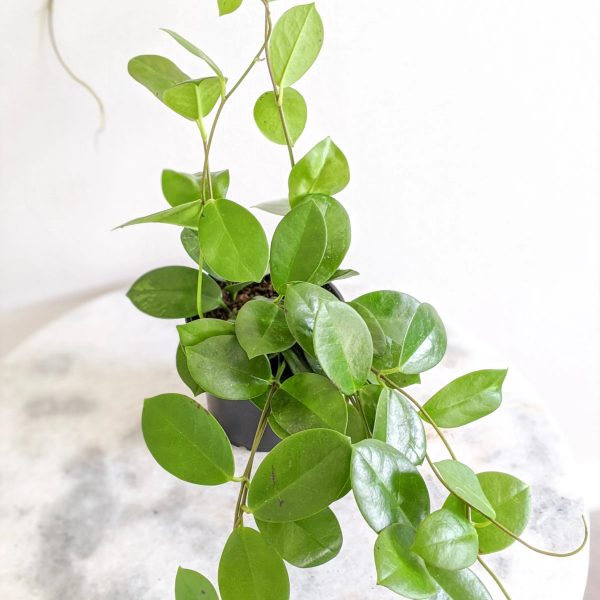
Deadheading hoya australis flowers
It is better to allow faded flowers to drop off naturally rather than deadheading. Do not prune away portions of the stem with peduncles because flowers will grow from those same structures the next time your plant blooms.
Common problems with Hoya Australis
Leaves turning yellow
If you see a yellow leaf on your hoya australis, it is a common sign of overwatering. It also indicates a lack of light. To know this, check the soil moisture and if it is soggy, it means it is overwatered. So, stop watering and wait until the soil is completely dried out before you water again.
It is better to switch your plant to a terra cotta pot to prevent overwatering. If it looks pale and reaching for the light source, it needs more light so move it closer to the widow or grow light.
Brown spots on leaves
Usually, brown spots that you see on Hoya australis can indicate a leaf spot which is a fungal disease caused by overwatering. If you see one, remove the affected area with clean pruners and sterilize them by rubbing alcohol between the cuts. Treat the plant with an organic fungicide.
Shriveled Leaves
Shriveled, wilted, or shriveled leaves often are caused by to lack of water. Water your plant deeply and monitor the soil moisture regularly. Only water your Hoya Australis when the top inch of the soil feels dry.
Also, Read The 20 Best, Easiest Houseplants That Can Be Grown in Any Home!
FAQs
Q: What type of plant is Hoya Australis?
A: Hoya australis is an epiphytic flowering vine native to Australia that’s known for its waxy, somewhat succulent leaves. It’s commonly kept as a houseplant in cooler climates.
Q: Does Hoya australis need a trellis?
A: Yes. Hoya australis grows long climbing vines that can benefit from having something to climb, such as a trellis or small stakes.
